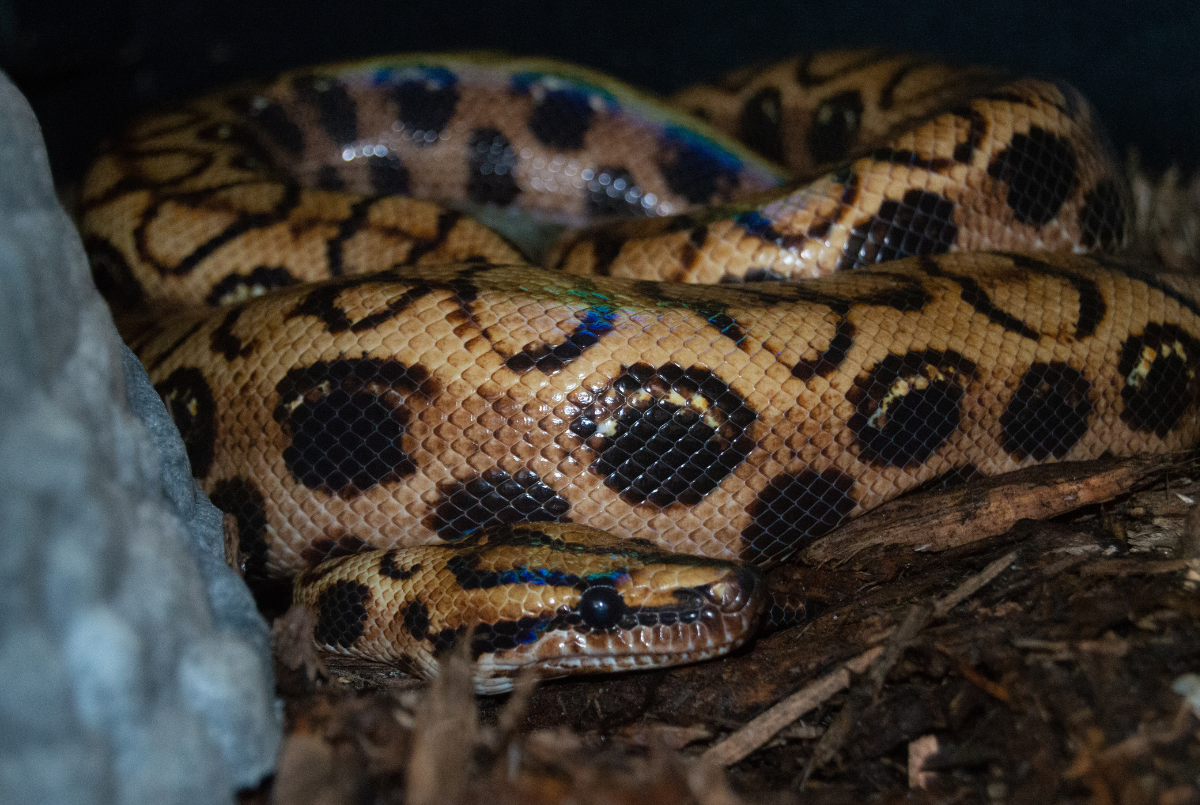Brazilian Rainbow Boa

Basic Information:
Scientific Name: Epicrates cenchria
Habitat: Rainbow boas can be found in the woodland forests and savannas of the Amazon basin.
Diet: Rainbow boas eat a variety of rodents, birds, and possibly some forms of aquatic life and lizards.
Size: 4 to 6 feet long
Weight: 2 to 5 pounds
Lifespan: About 10 years in the wild. Up to 30 years in human care.
Distribution Map:
I.U.C.N. Conservation Status:

What does this mean?
Least Concern – a species determined by the International Union for Conservation of Nature (I.U.C.N.) to be pervasive, abundant, and thriving.
Our Rainbow Boa:
Prism (Male) – Born June 10, 2000
About Rainbow Boas:
These nocturnal constrictors can be found populating Central and South American forests. Rainbow boas were granted their name due to the special iridescent or rainbow coloration that their scales get under certain light conditions. In combination to the unique patterns on each individual snake’s scales, every individual rainbow boa is distinct. They are primarily nocturnal and can be found in trees, on the ground, and within bodies of water while searching for food.
Did You Know?!
- Rainbow boas are nocturnal and actively search for prey in forest clearings and rocky areas. It kills its prey by suffocation.
- Rainbow boas have countershading; their coloration helps them to camouflage with fallen foliage on the forest floor. When the boas climb in the trees, their light bellies blend in with the light rays coming through the branches when viewed from below.
- Rainbow boas are ovoviviparous meaning that young boas develop in eggs that are retained inside the female’s body. They are then born alive, shedding their skin approximately 7-10 days later.
- Rainbow boas are at risk of becoming a threatened species in the wild due to habitat loss and illegal pet trades.
